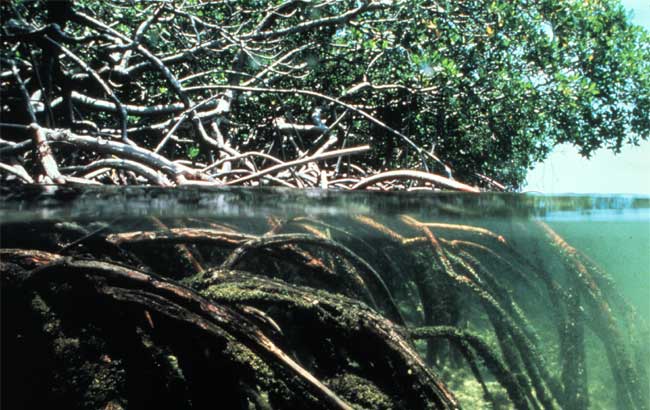 On Monday, the CBC reported: “Global warming is driving humanity toward a whole new level of many risks, a United Nations scientific panel reports, warning that the wild climate ride has only just begun.
On Monday, the CBC reported: “Global warming is driving humanity toward a whole new level of many risks, a United Nations scientific panel reports, warning that the wild climate ride has only just begun.
“‘Nobody on this planet is going to be untouched by the impacts of climate change,’ Intergovernmental Panel on Climate Change chairman Rajendra Pachauri said in a Monday news conference.
“Twenty-first century disasters such as killer heat waves in Europe, wildfires in the United States, droughts in Australia and deadly flooding in Mozambique, Thailand and Pakistan highlight how vulnerable humanity is to extreme weather, says a massive new report from a Nobel Prize-winning group of scientists released early Monday. The dangers are going to worsen as the climate changes even more, the report’s authors said.”
CNN reported Thursday: “Strict building codes and the preparedness of millions of Chileans who live along an arc of volcanoes and fault lines likely kept the death toll — only six by Wednesday afternoon — low after an 8.2-magnitude earthquake rumbled offshore and prompted a tsunami, observers said.”
ALFREDO QUARTO, mangroveap at olympus.net, @MangroveProject
Quarto is executive director of the Mangrove Action Project. He said today: “Mangroves typify the important role that coastal wetlands play in protecting coastlines from erosion and natural disasters such as hurricanes and tsunamis. When Hurricane Katrina struck New Orleans, one of the main reasons the hurricane turned so deadly and destructive was the earlier loss of natural coastal wetlands because of reduced sedimentation resulting from the dike system which was itself set up to prevent seasonal flooding. The tragic irony was the fact that these same dikes caused the deadly flooding which took so many lives when they broke, inundating the city and nearby towns. The earlier loss of miles of once protective salt marsh lands and mangroves was a serious loss for the people of New Orleans that few have paid attention to.
“Though there are no mangroves in Chile, the issue that comes to mind when this earthquake and tsunami disaster happened there on April 1 is the rising threats from natural disasters we all face because of the increase in global warming, the rising sea levels and the continuing rise in human settlements and infrastructure along our more vulnerable coastlines. The region in Chile where the tsunami hit is more arid, with hills rising behind the coast. The Atacama region just south of the quake center is an extensive desert. I think people in Chile are somewhat conditioned by frequent quakes to seek higher grounds during major quake events.
“Our coasts are more vulnerable now to these natural disasters, whether they be from hurricanes, tsunamis or wave surges because of the loss of natural coastal barriers, such as mangroves, sea grasses, corals, salt marshes or other coastal wetlands. Even sand dunes play an important part in acting as natural barriers against the occasional, but devastating ravages of Nature.
“Mangroves are especially important today in reducing the adverse effects from climate change, because they sequester more carbon dioxide and store more carbon than any other plant species. They can store carbon in their peat soils for millennia if left undisturbed. Mangroves also are the last line of defense against the present rising sea levels that pose immense threats to coastal cities, towns, and villages. Mangroves actually accrue sediments, thus building up the shoreline, which itself is a vital defense against rising sea levels.
“Though the work of Mangrove Action Project focuses on the importance of mangroves, MAP’s work does directly involve what is called Disaster Risk Reduction. In fact, increasing evidence of the importance of reducing the levels of climate change bring the mangroves and related coastal wetlands into clear view as vital to conserve and restore. But this effort to conserve and restore the mangroves and other coastal wetlands must also highlight the need to rethink our management plans for all of our planet’s coastal zones, perhaps better planning for creating buffer zones between the human settlements near the coasts and the protection of the natural bio-shields that might mitigate damages from natural disasters. Conserving and restoring our coastal wetlands will not stop climate change, but will help lessen the adverse impacts that we now expect. We still need to reduce our CO2 emissions and commit ourselves duly to this urgent, life-saving need. Sailing on a sinking boat is bad enough, but continuing to widen the rupture in the hull of humanity’s ‘vessel’ rather than repair the existing damage is appalling.”
See the recent piece “The World Must Invest in Mangroves” in The Ecologist by Mark Spalding, senior marine scientist at the Nature Conservancy.